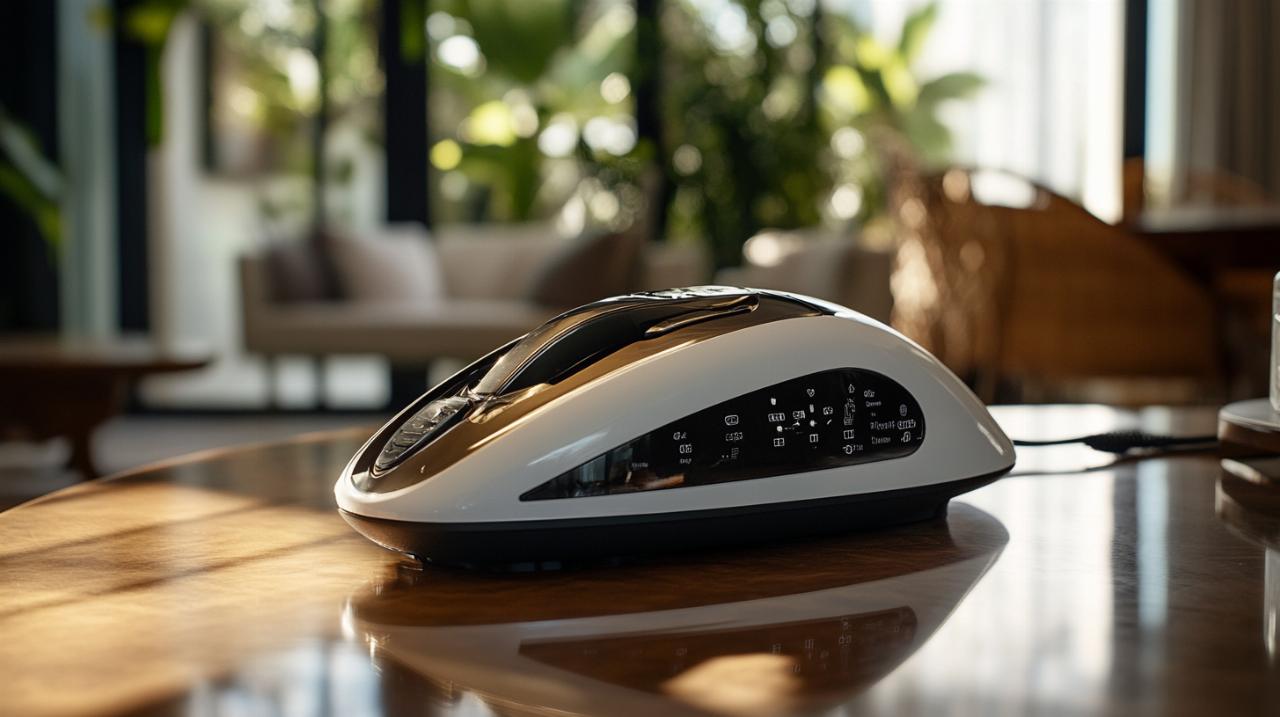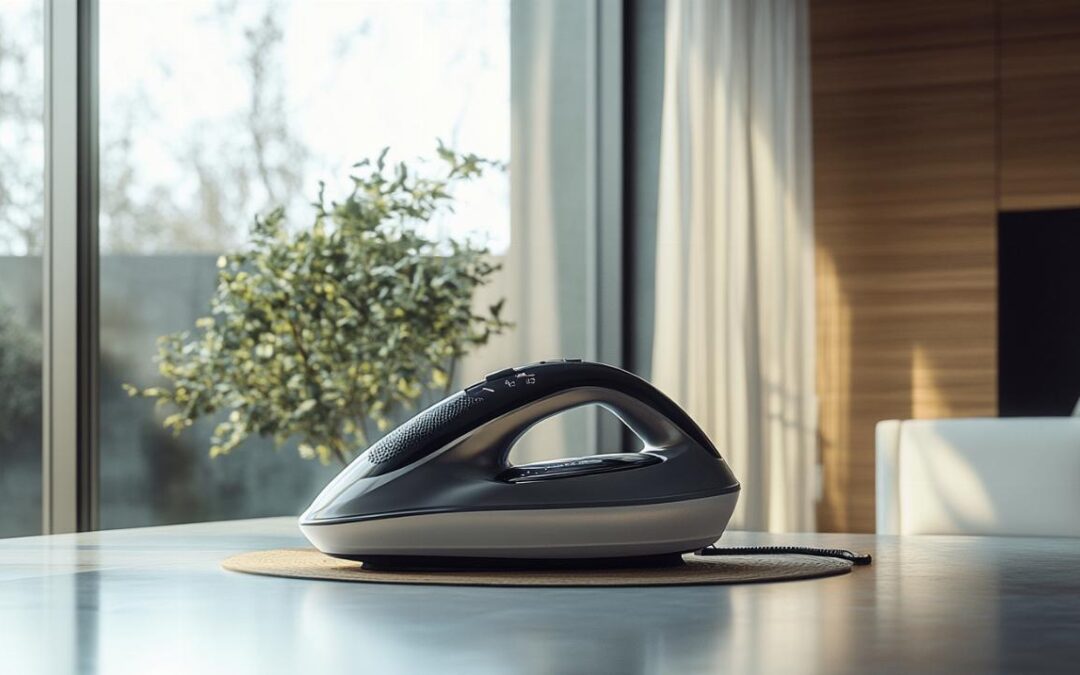The transformation of household chores has reached new heights with the latest developments in steam ironing technology. Modern appliances are no longer mere tools for smoothing wrinkles but have evolved into sophisticated devices that promise to revolutionise the way we care for our garments at home. With the smart home market anticipated to reach approximately one hundred and seventy-four billion pounds by twenty twenty-five, the demand for intelligent and efficient solutions continues to grow. These innovations reflect a broader shift towards integrating advanced features that not only simplify daily routines but also align with contemporary values of sustainability and convenience.
Revolutionary features transforming modern steam irons
The landscape of steam ironing has undergone a remarkable evolution, driven by cutting-edge engineering and a deeper understanding of garment care needs. Contemporary steam irons are equipped with an array of features designed to deliver impeccable results while reducing the effort required. Among the most notable advancements are precision temperature controls and intelligent fabric detection systems that adapt to the material being pressed. This ensures that delicate fabrics receive gentle treatment whilst sturdier textiles benefit from higher heat and steam output, all without manual intervention. Such innovations have been inspired by insights shared across various platforms, including discussions on the Miss Lavanda blog, where enthusiasts exchange thoughts on practical home solutions.
Precision temperature control and smart fabric detection systems
One of the standout innovations in recent years is the introduction of smart fabric detection systems. These systems automatically identify the type of material placed under the soleplate and adjust the temperature accordingly. This eliminates the guesswork traditionally associated with ironing and significantly reduces the risk of damage to clothing. The iCare mode, for instance, offers a safe temperature setting that protects garments from scorching, making it ideal for users who prefer a worry-free experience. This technology is particularly beneficial for households with a diverse wardrobe, ranging from silk blouses to cotton shirts, as it seamlessly transitions between different fabric types. The integration of such intelligent features reflects a growing consumer preference for smart appliances, with studies indicating that forty per cent of consumers are willing to pay a premium for devices that offer improved energy efficiency and convenience.
Precision temperature control extends beyond mere automation. Advanced models now feature rapid heat-up capabilities, allowing users to begin pressing within moments of switching on the device. This is complemented by adjustable settings that cater to specific materials, ensuring optimal results without unnecessary energy expenditure. The ability to fine-tune temperature not only enhances garment care but also contributes to overall energy savings, a consideration that resonates strongly with environmentally conscious consumers. The emphasis on eco-design in modern appliances can lead to energy cost reductions of up to twenty per cent, making these innovations both practical and economically sound.
Advanced steam generation and anti-drip technology
Steam generation lies at the heart of effective ironing, and recent technological strides have elevated this aspect to new levels. The best contemporary steam irons are capable of producing around fifty grams per minute of steam, a rate that ensures even the most stubborn creases are effortlessly smoothed. Steam generator irons, in particular, have set a new benchmark with rates reaching up to one hundred and ninety grams per minute and pressures of up to nine bar. This powerful steam output penetrates deep into fabric fibres, delivering professional-quality results in a fraction of the time. Such efficiency translates into significant time savings, with some models capable of reducing ironing duration by up to fifty per cent compared to traditional alternatives.
Anti-drip technology represents another critical advancement, addressing a common frustration associated with older models. This feature prevents water from leaking onto garments during ironing, particularly when the device is not yet fully heated. By ensuring that only dry steam is emitted, anti-drip systems protect clothing from unsightly water stains and enhance the overall user experience. The FreeGlide 3D soleplate is a prime example of innovation in this domain, designed to glide effortlessly over fabric and navigate around buttons and pockets with ease. The EloxalPlus soleplate takes durability a step further, boasting a hardness twice that of stainless steel, which ensures longevity and consistent performance over years of use.
Maximising Efficiency and Safety in Your Home Pressing Routine
 Efficiency and safety are paramount considerations in the design of modern steam irons. As households increasingly seek to balance convenience with responsibility, manufacturers have responded with devices that minimise energy consumption whilst maximising performance. The shift towards energy-efficient appliances is not merely a trend but a necessity, driven by both economic and environmental imperatives. Traditional steam irons typically consume between one thousand five hundred and two thousand watts, whereas energy-efficient models operate within a range of one thousand two hundred to one thousand eight hundred watts. Though the initial investment in such appliances may be higher, the long-term cost savings on energy bills make them a financially prudent choice.
Efficiency and safety are paramount considerations in the design of modern steam irons. As households increasingly seek to balance convenience with responsibility, manufacturers have responded with devices that minimise energy consumption whilst maximising performance. The shift towards energy-efficient appliances is not merely a trend but a necessity, driven by both economic and environmental imperatives. Traditional steam irons typically consume between one thousand five hundred and two thousand watts, whereas energy-efficient models operate within a range of one thousand two hundred to one thousand eight hundred watts. Though the initial investment in such appliances may be higher, the long-term cost savings on energy bills make them a financially prudent choice.
Energy-saving designs and rapid heat-up capabilities
Energy-saving designs are at the forefront of innovation in the realm of steam ironing. By optimising heat distribution and reducing power consumption, modern irons achieve the same, if not superior, results compared to their predecessors whilst using less electricity. This not only translates into lower energy bills but also lessens the environmental impact associated with household appliances. The emphasis on eco-design aligns with broader sustainability goals, reflecting a collective effort to mitigate the effects of climate change. Consumers are increasingly aware of the environmental footprint of their purchases, and the availability of energy-efficient options empowers them to make responsible choices without compromising on quality or performance.
Rapid heat-up capabilities further enhance the appeal of contemporary steam irons. Users no longer need to endure lengthy waiting periods before commencing their ironing tasks. This feature is particularly advantageous for individuals with busy schedules, enabling them to complete household chores swiftly and efficiently. The combination of quick heating and adjustable settings ensures that each garment receives the appropriate level of care, whether it is a delicate silk scarf or a robust cotton tablecloth. The integration of these features demonstrates a thoughtful approach to product design, one that prioritises user convenience and environmental stewardship in equal measure.
Ergonomic engineering and enhanced safety mechanisms
Ergonomic engineering has become a defining characteristic of high-quality steam irons. A lightweight design, balanced weight distribution, and comfortable grip all contribute to a more pleasant ironing experience, reducing strain on the wrist and arm during prolonged use. The stainless steel soleplate, a hallmark of premium models, ensures smooth gliding across fabrics and resists scratching, maintaining its polished appearance over time. Such attention to detail reflects an understanding that ironing, though often viewed as a mundane task, can be made significantly more enjoyable through thoughtful design.
Safety mechanisms have also seen substantial improvements, addressing concerns that have long plagued users of traditional irons. Automatic shut-off features activate when the device is left unattended, preventing accidents and providing peace of mind. The sanitisation function, which eliminates over ninety-nine point nine nine per cent of viruses and bacteria, adds an extra layer of hygiene to the ironing process. This is particularly relevant in the context of heightened awareness around cleanliness and health. The Braun CareStyle, for instance, exemplifies the integration of safety and efficiency, offering time and space savings whilst maintaining the highest standards of garment care. The company De'Longhi Braun Household, based in Neu-Isenburg, Germany, continues to lead the market with its commitment to sustainability and product durability, ensuring that their appliances not only meet but exceed consumer expectations.
The evolution of steam iron technology represents a convergence of innovation, efficiency, and user-centric design. As the smart appliances market continues to expand, driven by consumer demand for energy-efficient and convenient solutions, the future of home garment care looks increasingly promising. The shift towards automated ironing machines, though costly at over one thousand pounds, and the growing popularity of clothes steamers, which average around fifty pounds, illustrate the diverse options available to modern households. Whether opting for a feature-rich steam generator iron or a more budget-friendly model, consumers can rest assured that the latest technologies are designed to deliver exceptional results whilst honouring environmental and economic considerations. With a forty-five-day return window offered by many retailers, there is ample opportunity to explore these innovations and discover the perfect fit for individual needs. The journey towards efficient home care is not just about embracing new technology but about reimagining the very essence of household chores, transforming them from tedious tasks into seamless, satisfying experiences.

